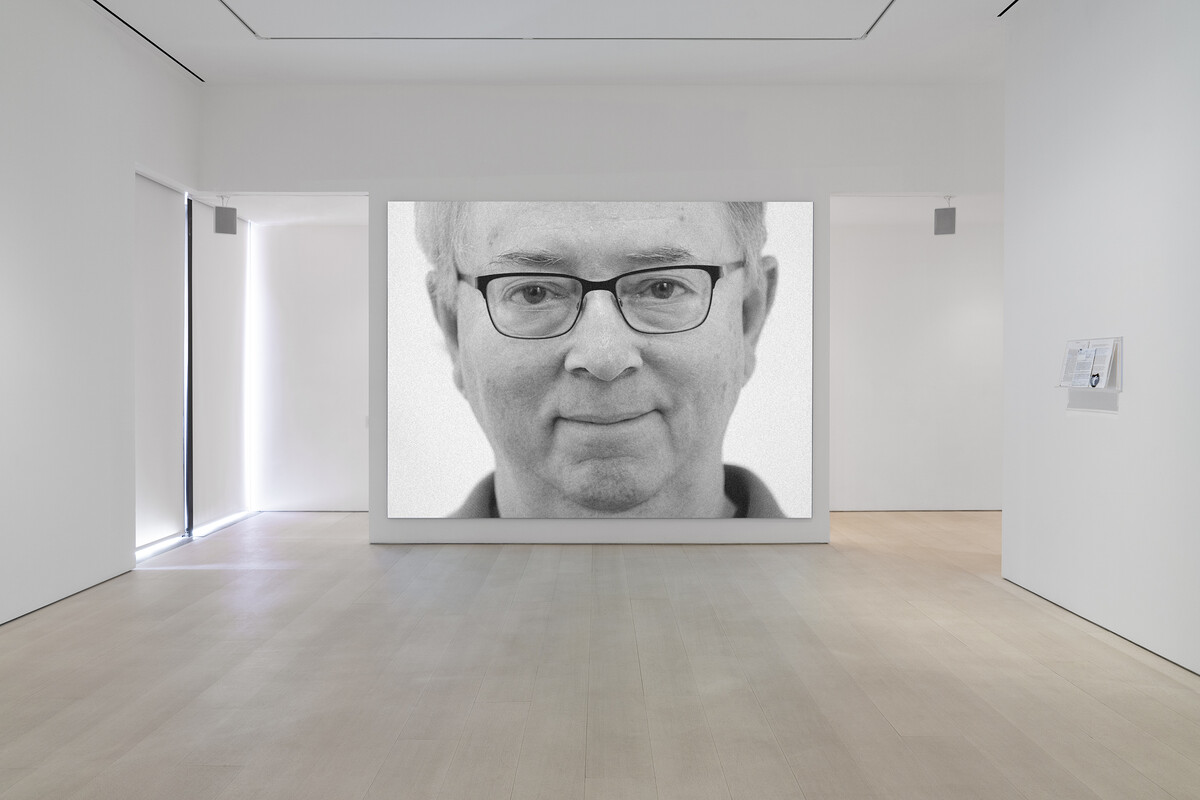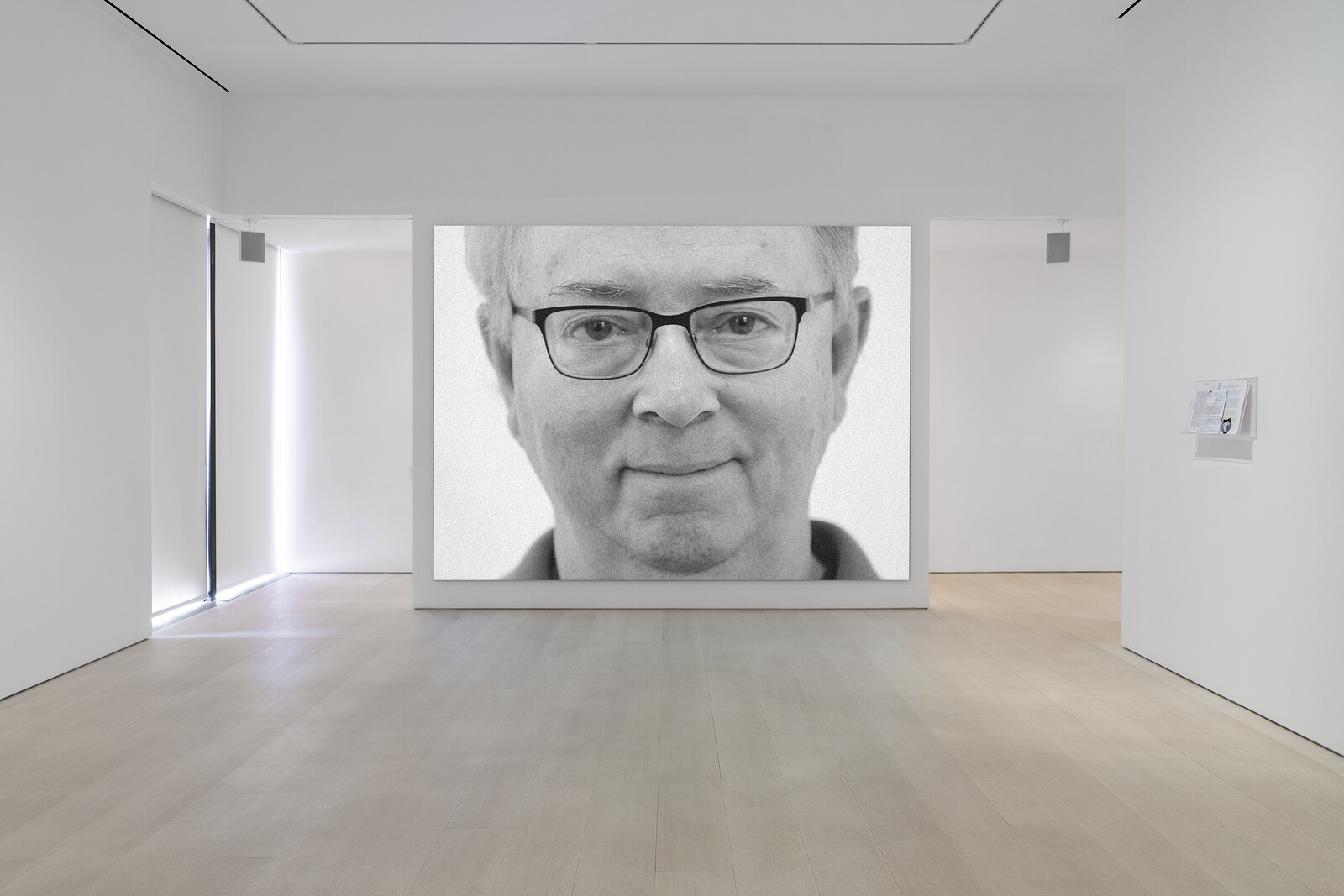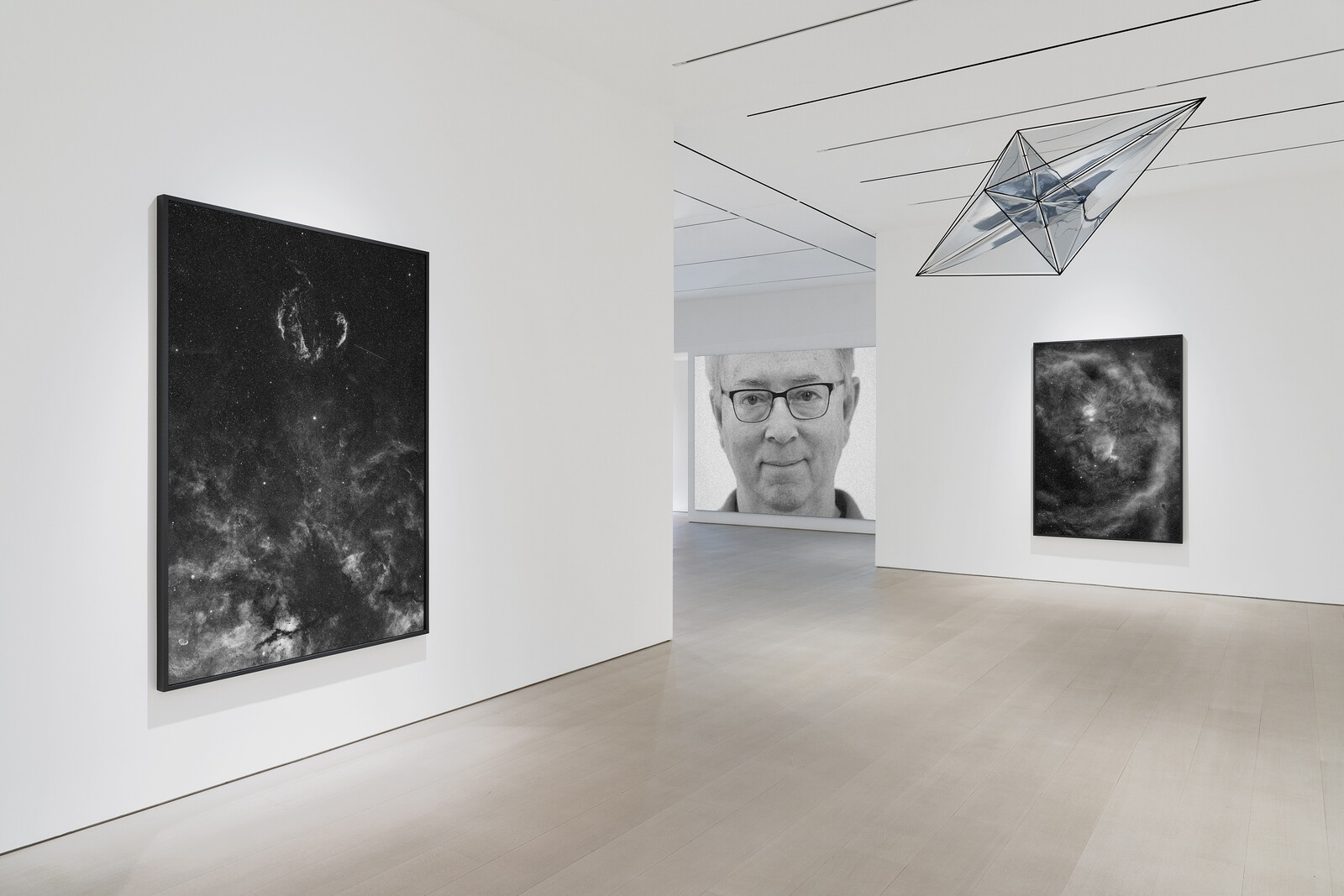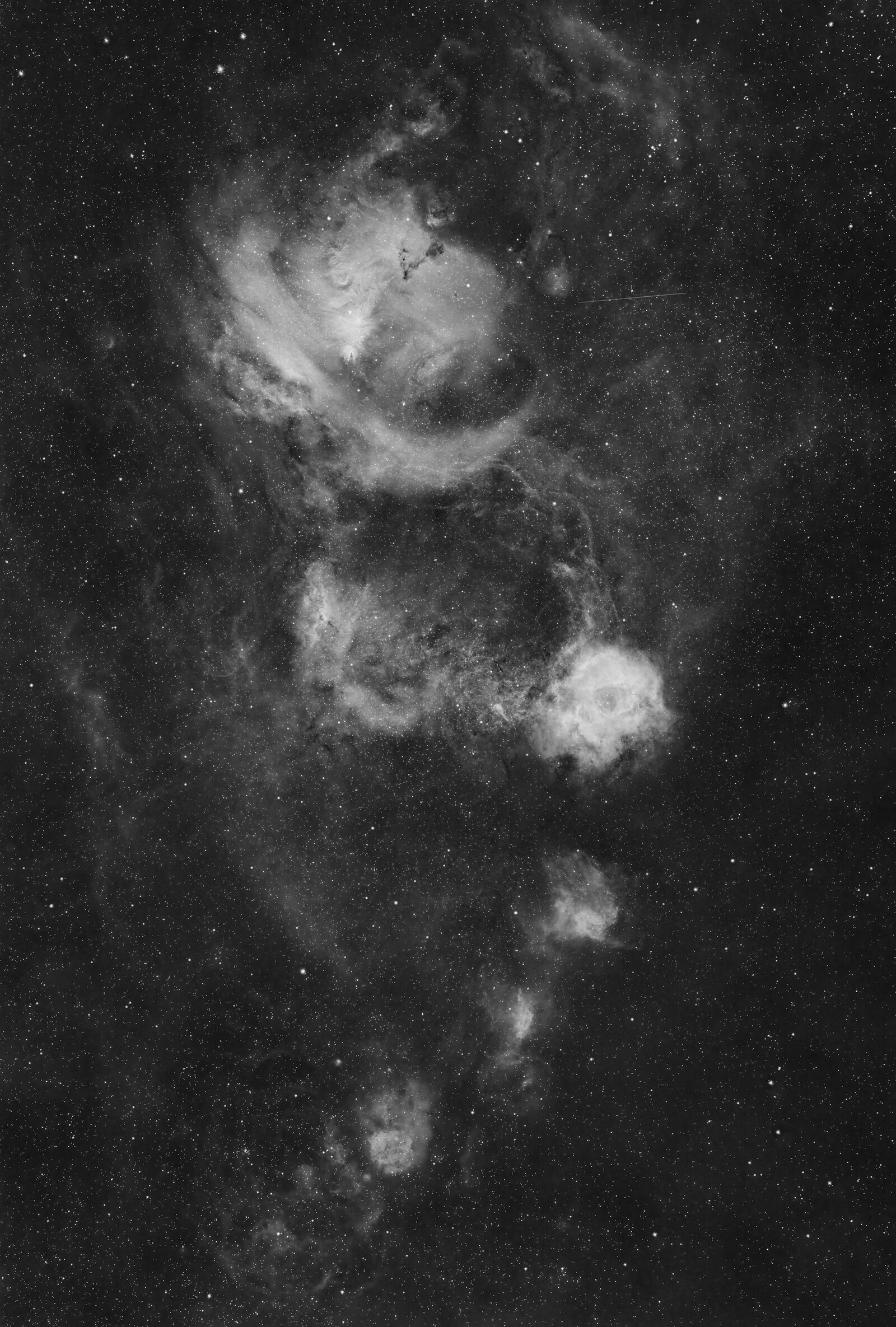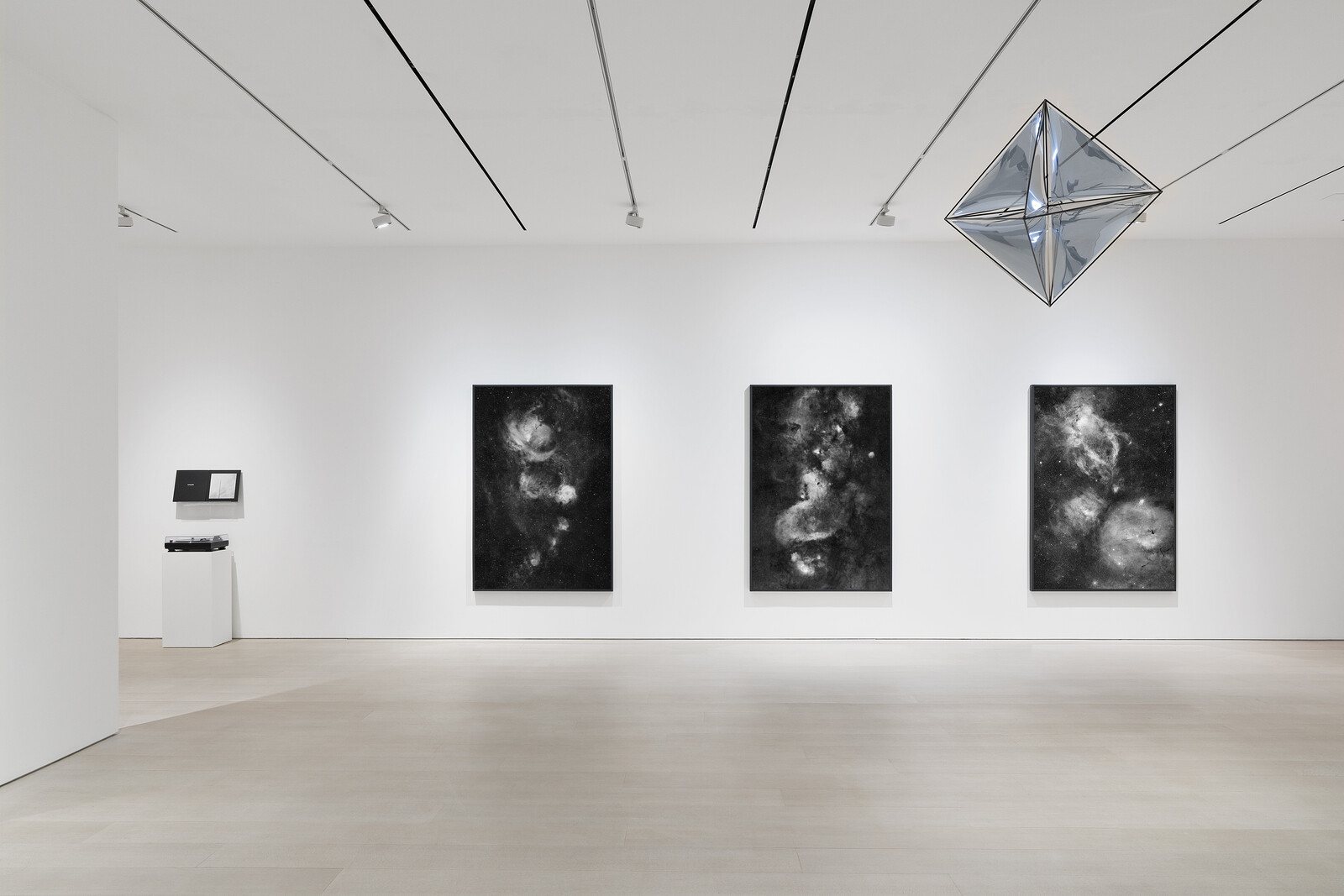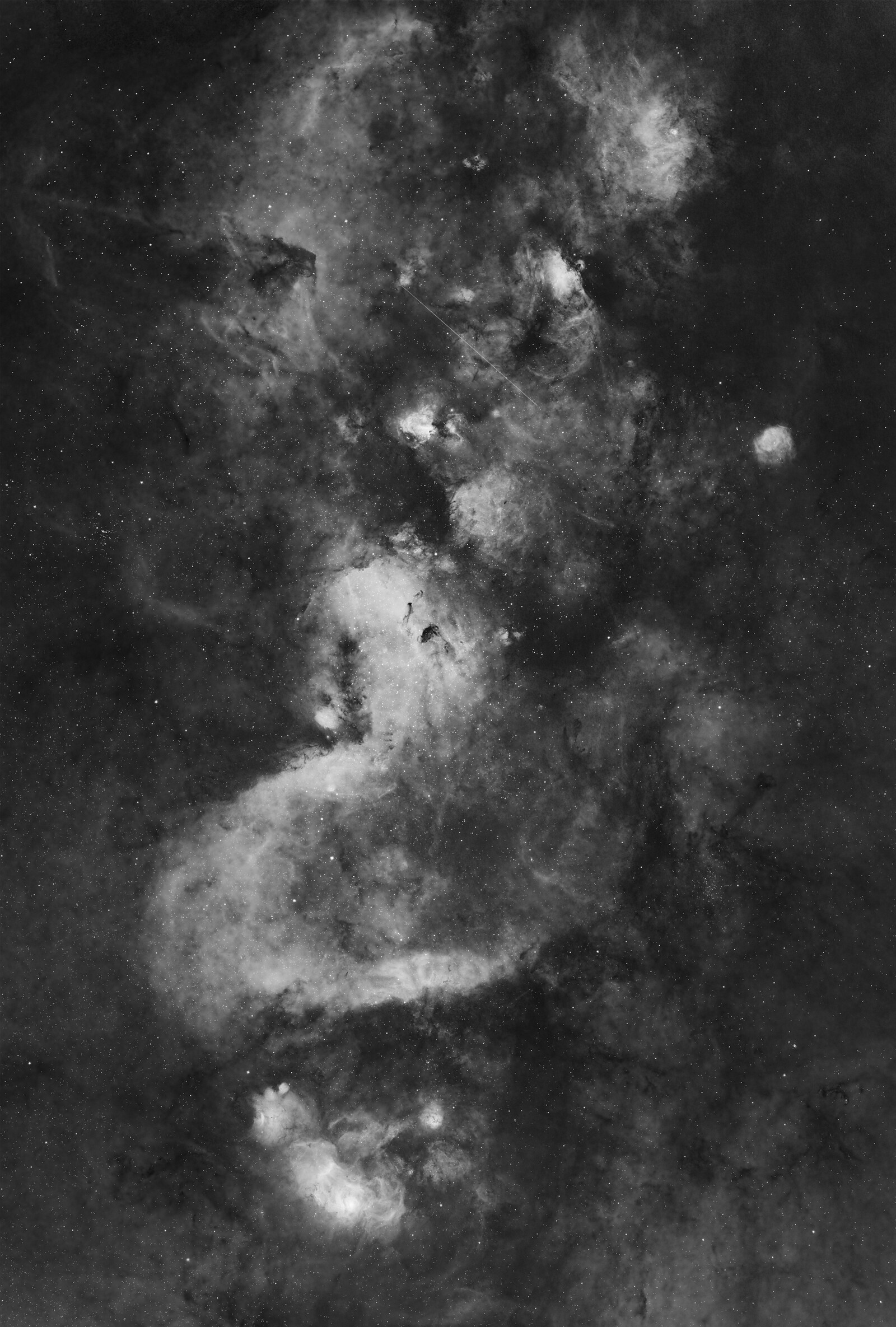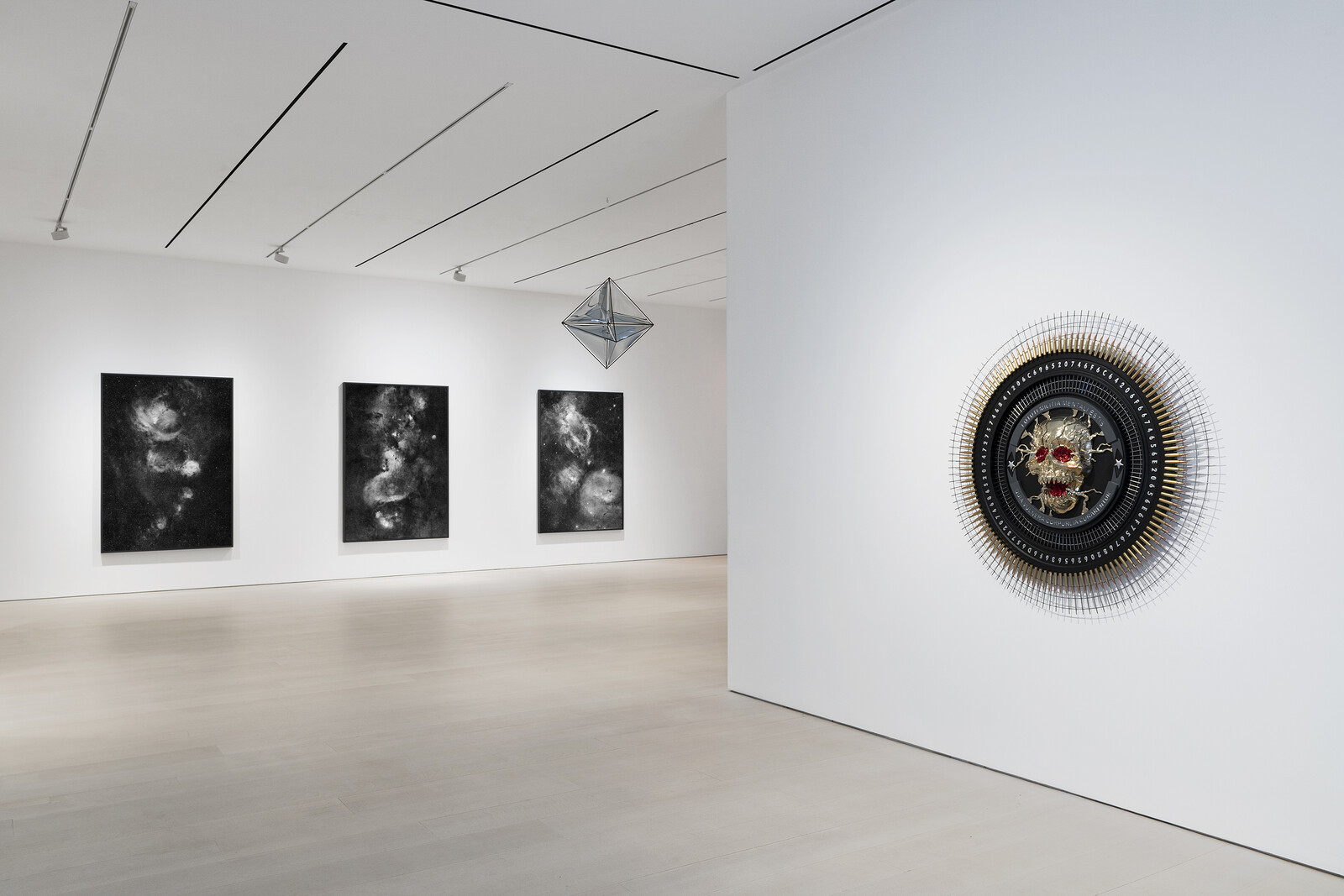Trevor Paglen’s early work was made while George W. Bush was marching the United States and its allies into a war justified by an image that was neither real nor fake. Despite the convenient, racist confusion of Middle Eastern countries in the minds of many Americans, it was widely known that Iraq had no relationship to the attack on Wall Street in 2001. And so the pageantry of legitimate aggression was obliged to produce another justification for Operation Iraqi Freedom: proof that Saddam Hussein was manufacturing weapons of mass destruction. When Secretary of State Colin Powell addressed the UN Security Council in a bid to secure international sanction for the invasion, what he presented was a set of blurry, ambiguous satellite images of what appeared to be buildings. The official reason for invading Iraq was a specific, actively enforced interpretation of some grainy shapes. Before Powell’s UN speech transformed the grainy shapes into sites for nuclear weapons production, the tapestry of Pablo Picasso’s Guernica (1937/55), which depicts civilian death by aerial bombardment and hangs at the entrance to the Security Council chambers, was covered up. Wars are always fought with propaganda, but this one began with an image whose facticity was dependent on its very ambiguity.
What differentiated the official rhetoric surrounding this war from others was the explicit claim, not on truth per se, but on interpretation; not the presentation of well-crafted fictions as official fact, but a public performance of revelation, concealment, and meaning-making. What was so mind-fucking about it was not watching people lie through their teeth (although there was plenty of that) but watching official after official announce, openly, that they were imposing their interpretation of information on the rest of us. Aside from Powell’s photographs, the most memorable version of this was, of course, Donald Rumsfeld’s 2002 response to an inconvenient intelligence report with an elaboration of the flexible epistemology of intelligence gathering and military strategy: known-knowns, known unknowns, and unknown unknowns.
While the medium and aesthetics of official lies have changed dramatically enough that a still image can seem quaint, Paglen’s photography is suited to moments of acute representational crisis. It suggests a form of political engagement that both acknowledges our dire political circumstances and avoids the imaginative foreclosure enforced by a seemingly permanent state of exception. The images of military infrastructure captured by what he has named limit-telephotography, for example, present us with glimpses of something that we would never see without prosthetically enhanced vision. But they are hardly evidence of anything in particular.
The photograph of a chemical and biological weapons proving ground in Dugway, UT, taken from a distance of 42 miles (2006, 2007) shows us a pastel landscape in which the terrestrial and celestial are impossibly confused. But there is a distinct form of realism in this evidentiary desert. Actual power does not disclose itself and its activities in easily legible forms. The softly suburban beige and blue palette of Proving Ground is in some sense a more accurate image of institutional secrecy than a high-resolution photograph of the secret activities themselves. Developed in response to untrustworthy narrators and in the face of both information and physical places that can never be fully accessed, Paglen’s work suggests that understanding a world like this requires something other than a perpetual grasping at the intellectual good old days, when truth was simple and agreed upon.
The early 2000s saw the domestic establishment of a particular military hegemony—the manufacturing and maintenance of spontaneous consent—that developed in concert with a growing knowledge of foreign atrocities. This was accomplished by a broad, tactical reorganization of public sight that reflected, in both direct and obscure ways, the creation of black sites and the concealment of torture and other crimes in a blatantly extractive war. As a result, we have all been in an impossible interpretive position for decades now.
“State secrecy,” writes Paglen in his 2009 book Blank Spots on the Map, “is an amalgam of logics and practices with a common intent: to conceal ‘facts on the ground,’ to make things disappear and to plausibly deny them.” This doesn’t translate into a plea for relativity, but looking at the world in a way that does not account for conspiracy, deception, and organized manipulation misrecognizes the nature of the heavily militarized, advanced capitalist spectacle through which we acquire cultural and political understanding. A concept of knowledge that posits stable truth subject to concealment and revelation (like evidence in a criminal trial) is itself, ultimately, a strategy of misdirection. This might just be another way of describing ideology, but emphasizing the mechanics of state secrecy as an important aspect of ideology draws our attention to the concrete relationship between the operations of the state and the different expressions of politics and versions of reality that we actually encounter.
Paglen has produced work that approaches these thorny questions from many positions and through many mediums, but his always elegiac images of the sky captured from the ground present these image-gathering and truth-producing military objects—satellites, UFOs, drones—in a genre that is both historically dense and emotionally freighted. And this gives us the opportunity to think more materially about image creation, and more honestly about our ambivalent involvement in these ideological productions. As Paglen argued in a 2016 essay for e-flux Architecture, different topologies emerge when we think about geography as a vertical rather than horizontal affair.1
***
The object captured in the photograph titled UNKNOWN #83975 (Unclassified object near The Scutum Supershell) (2023), currently on display at Pace Gallery in New York, forms a razor-thin, white, diagonal line through the milky whorls of dust and gas made visible by an infrared camera affixed to a telescope and pointed at a clear night sky above Joshua Tree, CA. The evidence of the unknown object’s transit resembles a scratch on the large (80 x 54 inches) print. Without explanation and the context provided by the appearance of similar lines in other photographs in the series, I would have assumed that this line was some sort of flaw. And in some sense that is exactly what it is: matter out of place, garbage from broken satellites or menacing military operations in the midst of celestial perfection and order. People travel far for a sky clear enough to satisfy their desire to be awed by an untouched outside organized by extra-human laws. The unknowns are a form of literal and conceptual pollution.
These photographs are from a series called UNID. This is the term used by amateur astronomers who have been tracking orbiting objects not publicly acknowledged by the military (presumably because they are classified). The photographs of UNIDs, unknown objects numbered according to a complex, agreed upon system, suggest that we might, at best, confirm our knowledge that something we already know exists, actually does exist. Paglen writes that “every analytical technique available supplies only tiny variations on a simple fact: the identity of these objects is unknown.” His photographs often document an image’s refusal to disclose the stable proof that is expected from them. This does not mean that information about locations and practices is unimportant. The subjects of Paglen’s countersurveillance are not to be taken lightly. There is an earnest desire and a lot of work, technological expertise, and time put into locating and describing these objects as accurately as possible, even if that description turns out to be a repeated demonstration of the failure of evidence. It is worth emphasizing that confronting and acknowledging obstructions is not the same as resigning oneself to a lack of answers.
Some images in the series “The Other Night Sky” are solidly in the register of landscape photography, similarly marred by barely signifying little white lines left by satellites. Others are more abstract—just lines on a sky-colored surface. All of them enlist us in the artist’s desire to capture and categorize these orbiting traces of military and imperial ambitions. And this is where, Paglen tells me, we all become vulnerable to manipulation— not as unwitting victims of bad actors or an unstable information ecosystem, but in the very act of interpretation. The artist is redistributing perceptual vulnerability.
The desire to categorize is central to the series of photographs of drones. And nowhere is the use of taxonomy or information as an attempt to forestall a threat more apparent. Like the satellites, the drones are tiny, mere specks against awesome glowing clouds: Sentinel, Predator, Reaper. The military’s honesty is occasionally astounding.
The choice to allow the drones to remain small and inscrutable against expanses of sky reminds us that the sky is itself an important object of inquiry. Paglen thinks that the photographs are an intervention in an “an obvious aesthetics of the sky and the night that is historically also the site of truth. We assume that if we look at the middle of the galaxy or the universe, we will see the origin of all things. If we send Hubble space telescopes out there, then we are going to find out whether there’s another universe and where we came from and where we’re going. All of these big capital ‘T’ truth kind of questions.” Photographing space trash, satellites, chemtrails, and drones doesn’t give a big “T” truth answer, but it tells us a lot about the way that truth is constructed.
The sky has long been a site of speculation and fantasy yoked to truth through the language of colonialism and technological progress. Talking about things in the sky is almost always talking about things that have yet to be empirically observed. Our relationship to the sky, following the alleged closure of the terrestrial frontier, reminds us that capital “T” truth is a plastic and ever receding phenomenon. That it is, structurally, less stable fact than a specific form of desire by definition, never fully apprehended. In 1781 Immanuel Kant wrote in the Critique of Pure Reason that “if it were possible to settle by any sort of experience whether there are inhabitants of at least some of the planets that we see, I might well bet everything that I have on it. Hence, I say that it is not merely an opinion but a strong belief (on the correctness of which I would wager many advantages in life) that there are also inhabitants of other worlds.”2
Richard Doty—the subject of Paglen’s 2023 film Doty—worked in the Air Force Office of Special Investigations. His job, he explains, was to recruit spies and spread disinformation about UFOs that would benefit the Air Force’s efforts to keep certain activities secret. Much of what he has to say in the film is astounding for its transparent falsity. For example, that the aliens (which do exist) wear capes and are subject to heteronormative gender roles. But this is, in itself, hardly important. More significant is the way these claims disturb the truth value of the opening lines: “My name is Richard Doty. My favorite color is gray.” Like the unknown objects who’s repeated approaches yield the simple fact of their unknown identity. We can know that a Richard Doty exists in so far as he appears on screen but it is clear that no amount of questioning will ever get us any closer to knowing which of his statements are true or false.
There is a lot of room to read Doty as Paglen’s alter-ego. During a conversation with the artist, he shows me a photograph of a seagull that I mistake for an airplane. Later he asks: “Is my desire to read this image in one way or another, an opportunity for somebody to manipulate me? The answer is absolutely Yes.”
Trevor Paglen’s “You’ve Just Been Fucked by PSYOPS” is on view at Pace Gallery, New York through July 1.
Trevor Paglen, “Some Sketches on Vertical Geographies” e-flux Architecture (October 2016), https://www.e-flux.com/architecture/superhumanity/68726/some-sketches-on-vertical-geographies/.
Immanuel Kant, Critique of Pure Reason, trans. & ed. P. Guyer and A.W. Wood (Cambridge: Cambridge University Press, 1998), 687.
